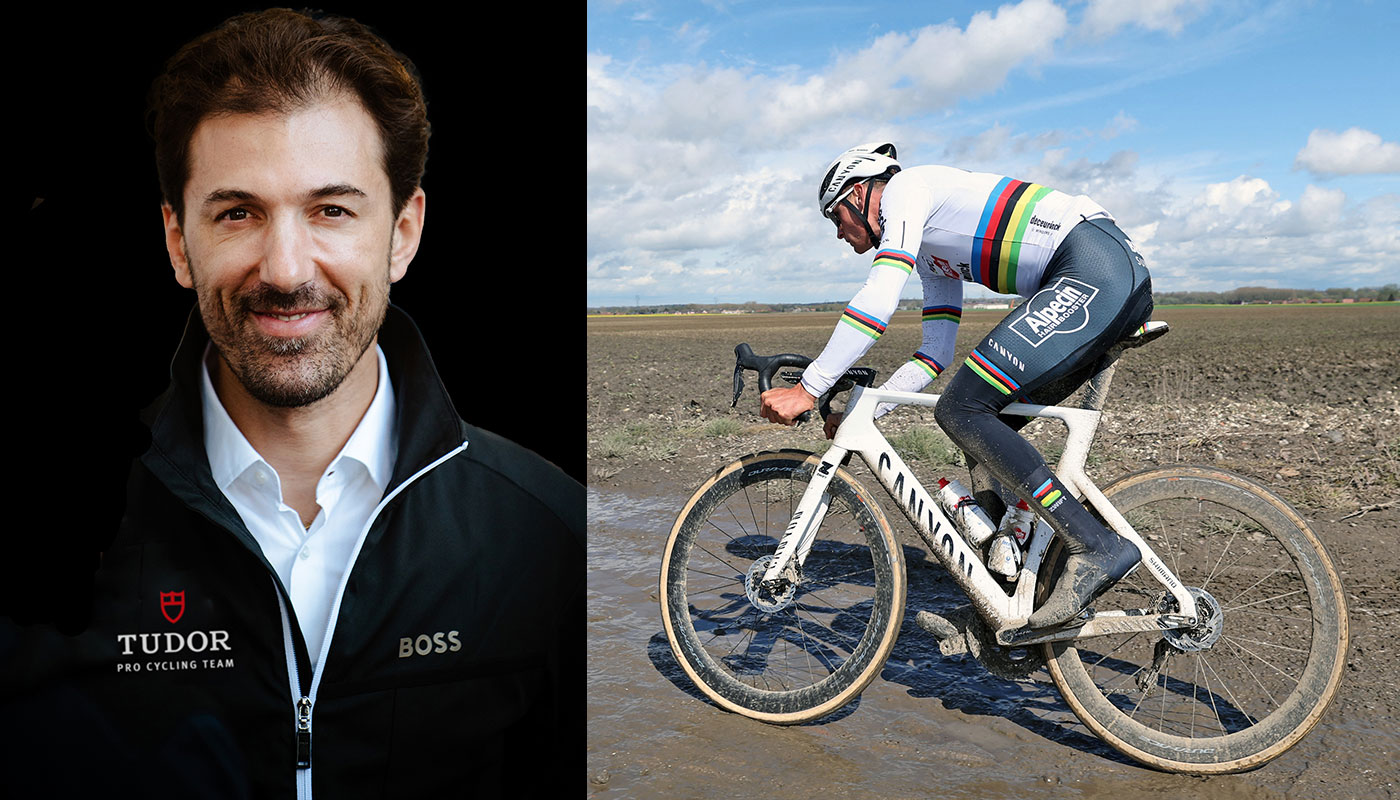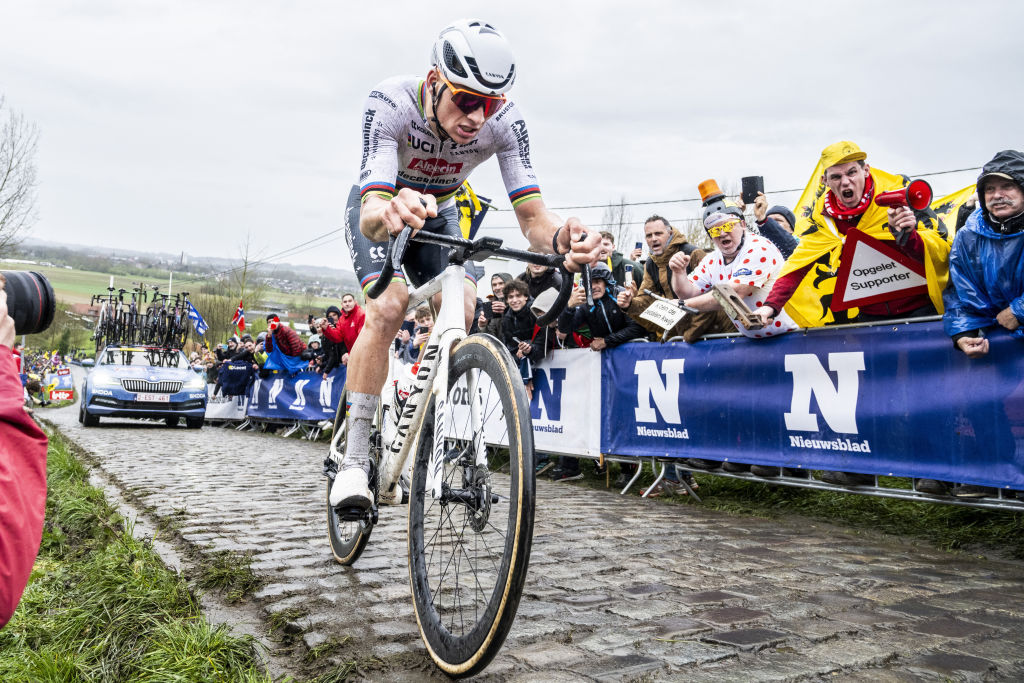
The biggest talking point coming into this edition of Paris-Roubaix has been about the course rather than the favourites. The decision to change the approach to the Arenberg was always going to create debate, especially when it was announced at such short notice before the race.
Mathieu van der Poel’s initial reaction on social media was quite hard, and I think a lot of people were caught by surprise by this change. But at the same time, most of them would agree that the entrance to the Arenberg is the most chaotic place in Paris-Roubaix, with a very high risk of crashes.
We all know what the usual entrance to the Arenberg is like. It’s always hectic on the approach, because everybody is battling to be at the front before you hit those cobbles. And when the peloton arrives at 70kph and goes from the smooth road to the rough cobbles, there are almost always crashes. If you get caught behind there, it changes your whole race and maybe even ends it, so it’s essential to be in front.
Some years are better than others. When it rains, for instance, the earlier sectors create more of a natural selection. You get a lot of people dropped already at Haveluy, and that makes for a smaller bunch and a little less chaos at the entrance to the Arenberg. But in dry conditions, you can get almost a full peloton hitting the Arenberg together, all trying to be in front. Chaos, total chaos.
In that sense, it’s understandable that ASO wanted to do something to reduce the speed of the peloton on the approach to the Arenberg. I also support the idea of having the bunch come onto the Arenberg more slowly – but the big question for me is whether this new chicane is the right way to do it.

Riders will come from the left, go around this traffic island and then turn right into Arenberg
The problem with this chicane is that it looks like it might be worse. Or at least, it doesn’t solve the problem, it just moves it somewhere else. Whoever brakes coming into that chicane will lose their position, so people will go all-in, and that’s potentially even more chaotic.
I don’t know if it’s possible, but in the future, they could maybe try to find a road in the village where they can make a couple of turns that would force the bunch to lose speed before they approach the Arenberg.
I don’t really feel like I’m the right the person to say whether the change is right or wrong, because I don’t race anymore, and our Tudor Pro Cycling Team are not racing Paris-Roubaix this year either. All I can say is that the announcement came quite late. I don’t know if that was a deliberate decision from ASO, or if it was that the CPA only asked for the change recently. I don’t know the background at all.
Every change always has a consequence. I’m in favour of having the bunch come onto the Arenberg more slowly, but to do that, you need to calculate these things carefully. I think this chicane could be a problem. It’s like having a corner 50 metres from the finish in a bunch sprint.
After the chicane, however, we will see something we haven’t seen before, a peloton coming onto the Arenberg at low speed. That’s going to make the sector itself feel harder than before, because it’s difficult to build momentum on the cobbles.

Van der Poel’s perfect preparation
The change to the Arenberg doesn’t alter anything for Mathieu van der Poel. He has all the momentum after winning the Tour of Flanders, and I think he’s an even bigger favourite for Paris-Roubaix than he was for the Ronde.
When you win the Tour of Flanders, you go into Paris-Roubaix with everybody watching you, but that’s not a problem, because you also come into the race with such a big confidence boost. I was lucky to be in that situation myself, and I can remember the feeling. You trust in your team, and you trust in yourself. You know that if you move, the others are going to have difficulty following you. It’s a nice position to be in.
The other positive for Mathieu is that it looks like he had a really good week between Flanders and Roubaix. I think he was smart to go to Spain for a few days to train in those conditions. That might be a help on Sunday if the temperatures are as high as the forecast suggests, but it’s already useful just to be able to train and recover in the sunshine in Spain. Down there, he could do the work he needed to do, while also having a relaxed week after the Ronde.

I did something similar when I won Flanders and Roubaix in 2013. It was already a really cold Spring that year, and the weather forecast in Switzerland was for more rain on the Tuesday and Wednesday between the two races. At the last minute, I decided to go down to Alicante for those days with my coach Luca Guercilena and a soigneur. We organised everything just the day before, but it was ideal. In the good weather, I was able to do all the training I had planned behind Luca’s scooter.
Everybody else was training in bad weather that week, but I said to myself that I wasn’t going to put all my previous preparation to waste just because of two days of bad weather. I invested in myself and in this trip to prepare properly. I think Van der Poel has done the same thing and it makes him an even bigger favourite for Paris-Roubaix.
Mads Pedersen can be good on Sunday, because he should be recovered from his crash at Dwars door Vlaanderen and he had already shown his form was excellent. Roubaix suits him better than Flanders too, so he’s a contender, but I just don’t know if he can reach the same peak that Van der Poel is at currently.

The reality is there is only one favourite for this race, I’m sorry. There’s Van der Poel out in front, and then there’s everybody else.
At the Tour of Flanders, we saw teams try to isolate Mathieu by attacking early, but his Alpecin-Deceuinck team was very strong. I’m sure we’ll see something similar at Paris-Roubaix, with lots of breakaways from distance.
This time, because of the circumstances of Paris-Roubaix, we could have a situation where Van der Poel is alone as early as the Arenberg, but that isn’t necessarily going to be a problem for him. The way Van der Poel is riding, he can manage the bunch in my opinion. After a certain point, Paris-Roubaix becomes a sort of individual time trial and team support in the finale is a bit less important.
That said, Van der Poel will have Jasper Philipsen with him in the team on Sunday. Philipsen was second in Roubaix last year, and it will be interesting to see how Alpecin play that card. If Mathieu is being tightly marked, that might give Philipsen the green light to move. But I think it’s more likely that Philipsen pays Van der Poel back for his help at Milan-San Remo by riding for him here.
Get unlimited access to all of our coverage of the Spring Classics – including reporting, breaking news and analysis from the Paris-Roubaix, Tour of Flanders and more. Find out more.








